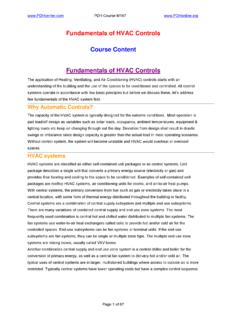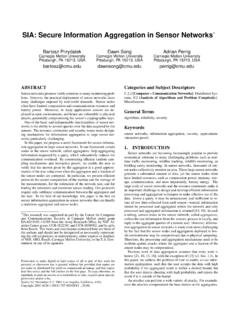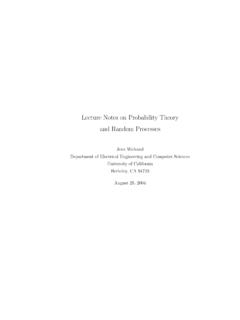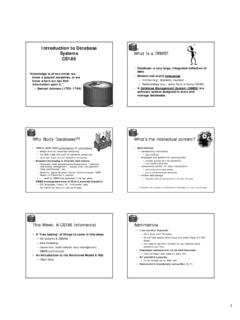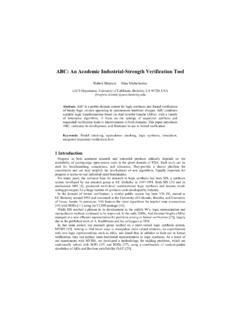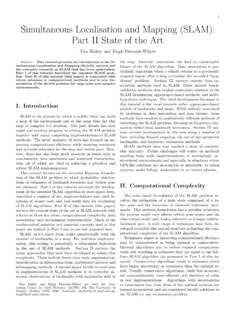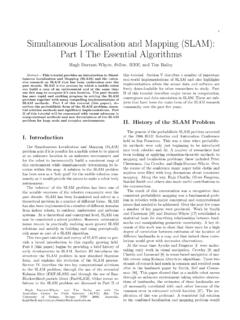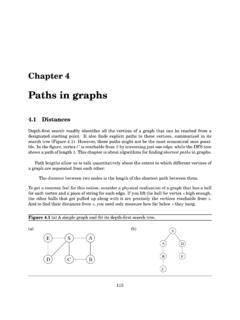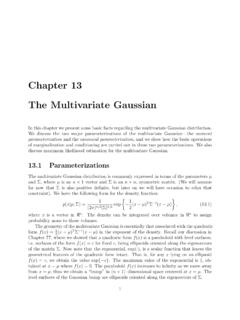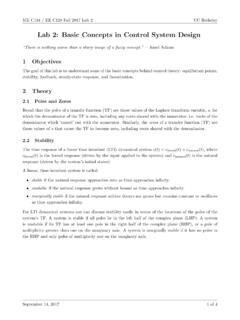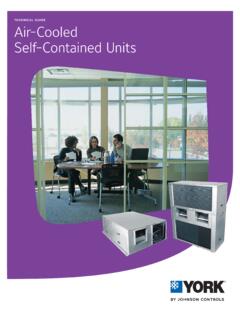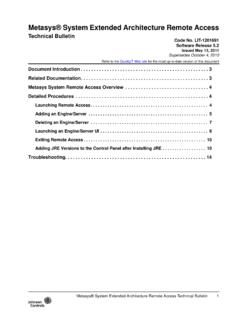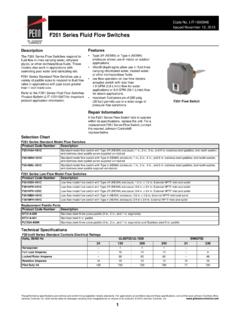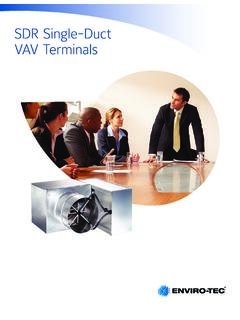Transcription of Fundamentals of HVAC Controls Course Content ... - People
1 PDH Course M197 Fundamentals of hvac Controls Course Content Fundamentals of hvac Controls The application of Heating, Ventilating, and Air-Conditioning ( hvac ) Controls starts with an understanding of the building and the use of the spaces to be conditioned and controlled. All control systems operate in accordance with few basic principles but before we discuss these, let's address few Fundamentals of the hvac system first. Why Automatic Controls ? The capacity of the hvac system is typically designed for the extreme conditions. Most operation is part load/off design as variables such as solar loads, occupancy, ambient temperatures, equipment &.
2 Lighting loads etc keep on changing through out the day. Deviation from design shall result in drastic swings or imbalance since design capacity is greater than the actual load in most operating scenarios. Without control system, the system will become unstable and hvac would overheat or overcool spaces. hvac systems hvac systems are classified as either self-contained unit packages or as central systems. Unit package describes a single unit that converts a primary energy source (electricity or gas) and provides final heating and cooling to the space to be conditioned.
3 Examples of self-contained unit packages are rooftop hvac systems, air conditioning units for rooms, and air-to-air heat pumps. With central systems, the primary conversion from fuel such as gas or electricity takes place in a central location, with some form of thermal energy distributed throughout the building or facility. Central systems are a combination of central supply subsystem and multiple end use subsystems. There are many variations of combined central supply and end use zone systems. The most frequently used combination is central hot and chilled water distributed to multiple fan systems.
4 The fan systems use water-to-air heat exchangers called coils to provide hot and/or cold air for the controlled spaces. End-use subsystems can be fan systems or terminal units. If the end use subsystems are fan systems, they can be single or multiple zone type. The multiple end use zone systems are mixing boxes, usually called VAV boxes. Another combination central supply and end use zone system is a central chiller and boiler for the conversion of primary energy, as well as a central fan system to delivery hot and/or cold air. The typical uses of central systems are in larger, multistoried buildings where access to outside air is more restricted.
5 Typically central systems have lower operating costs but have a complex control sequence. Page 1 of 67. PDH Course M197 How does central air-conditioning system work? Cooling Cycle (chilled water system): The supply air, which is approximately 20 F cooler than the air in the conditioned space, leaves the cooling coil through the supply air fan, down to the ductwork and into the conditioned space. The cool supply air picks up heat in the conditioned space and the warmer air makes its way into the return air duct back to the air handling unit. The return air mixes with outside air in a mixing chamber and goes through the filters and cooling coil.
6 The mixed air gives up its heat into the chilled water tubes in the cooling coil, which has fins attached to the tubes to facilitate heat transfer. The cooled supply air leaves the cooling coil and the air cycle repeats. The chilled water circulating through the cooling coil tubes, after picking up heat from the mixed air, leaves the cooling coil and goes through the chilled water return (CHWR) pipe to the chiller's evaporator. Here it gives up the heat into the refrigeration system. The newly "chilled" water leaves the evaporator and is pumped through the chilled water supply (CHWS) piping into the cooling coil continuously and the water cycle repeats.
7 The evaporator is a heat exchanger that allows heat from the CHWR to flow by conduction into the refrigerant tubes. The liquid refrigerant in the tubes "boils off" to a vapor removing heat from the water and conveying the heat to the compressor and then to the condenser. The heat from the condenser is conveyed to the cooling tower by the condenser water. Finally, outside air is drawn across the cooling tower, removing the heat from the water through the process of evaporation. The figure below provides a conceptual view of chilled water air-conditioning system with water- cooled condenser.
8 The main equipment used in the chilled water system is a chiller package that includes 1) A refrigeration compressor (reciprocating, scroll, screw or centrifugal type), 2) Shell and tube heat exchanger (evaporator) for chilled water production 3) Shell and tube heat exchanger (condenser) for heat rejection in water cooled configuration (alternatively, air cooled condenser can be used, where water is scarce or its use is prohibited). 4) A cooling tower to reject the heat of condenser water 5) An expansion valve between condenser and the evaporator The chilled water system is also called central air conditioning system.
9 This is because the chilled water system can be networked to have multiple cooling coils distributed through out a large or distributed buildings with the refrigeration equipment (chiller) placed at one base central location. Page 2 of 67. PDH Course M197 The heating cycle also follows the same cycle with a difference that the chilled water is replaced with hot water/steam and the chiller is replaced with boiler. The condenser and cooling tower circuit is not needed. What Parameters are controlled? A proper environment is described with four variables: temperature, humidity, pressure and ventilation.
10 Temperature ASHRAE 55-1992 suggests the following temperature ranges for overall thermal comfort. While no single environment can be judged satisfactory by everybody, it varies between People , regions and countries. Uniformity of temperature is important to comfort. The temperatures should not vary within single zone or change suddenly or drastically. Humidity Humidity is the presence of water vapor in air and it affects human comfort. ASHRAE 55-1992. recommends the relative humidity (RH) to be maintained between 25 and 60%. Usually air is humidified to between 25 -45% during winter and dehumidified to below 60% during summer.
